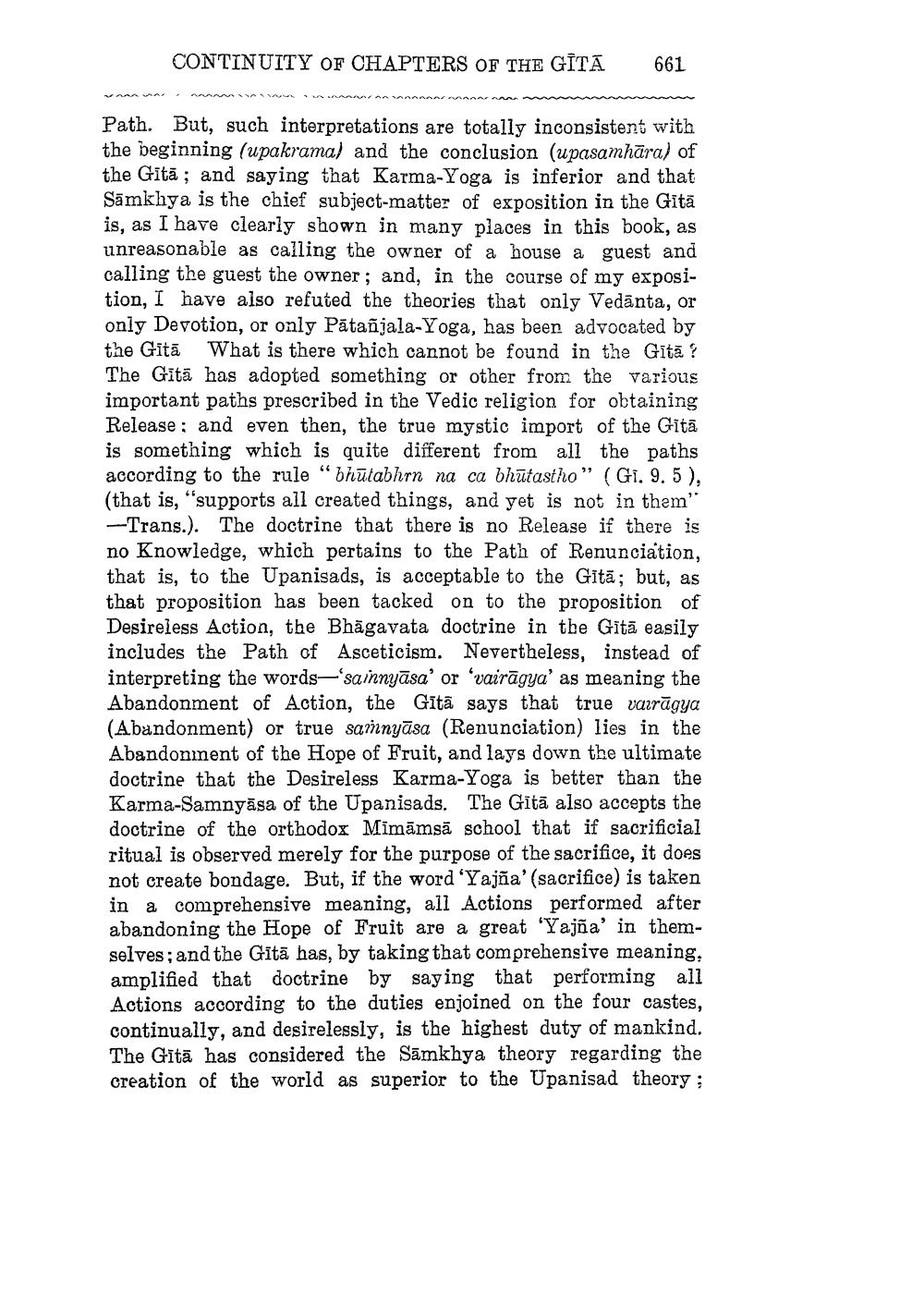________________
CONTINUITY OF CHAPTERS OF THE GITĀ
661
Path. But, such interpretations are totally inconsistent with the beginning (upakrama) and the conclusion (upasamhāra) of the Gītā; and saying that Karma-Yoga is inferior and that Sāmkhya is the chief subject matter of exposition in the Gītā is, as I have clearly shown in many places in this book, as unreasonable as calling the owner of a house a guest and calling the guest the owner; and, in the course of my exposition, I have also refuted the theories that only Vedānta, or only Devotion, or only Pätañjala-Yoga, has been advocated by the Gītā What is there which cannot be found in the Gītā? The Gītā has adopted something or other from the various important paths prescribed in the Vedic religion for obtaining Release ; and even then, the true mystic import of the Gitā is something which is quite different from all the paths according to the rule “bhūtabhrn na ca bhūtastho" (Gi. 9.5), (that is, "supports all created things, and yet is not in them"
-Trans.). The doctrine that there is no Release if there is no Knowledge, which pertains to the Path of Renunciation, that is, to the Upanisads, is acceptable to the Gītā; but, as that proposition has been tacked on to the proposition of Desireless Action, the Bhāgavata doctrine in the Gītā easily includes the path of Asceticism. Nevertheless, instead of interpreting the words—'sainnyāsa' or 'vairāgya' as meaning the Abandonment of Action, the Gītā says that true vairāgya (Abandonment) or true sainyāsa (Renunciation) lies in the Abandonment of the Hope of Fruit, and lays down the ultimate doctrine that the Desireless Karma-Yoga is better than the Karma-Samnyāsa of the Upanisads. The Gītā also accepts the doctrine of the orthodox Mīmāmsā school that if sacrificial ritual is observed merely for the purpose of the sacrifice, it does not create bondage. But, if the word 'Yajña' (sacrifice) is taken in a comprehensive meaning, all Actions performed after abandoning the Hope of Fruit are a great 'Yajña' in themselves; and the Gītā has, by taking that comprehensive meaning, amplified that doctrine by saying that performing all Actions according to the duties enjoined on the four castes, continually, and desirelessly, is the highest duty of mankind. The Gitā has considered the Sāmkhya theory regarding the creation of the world as superior to the Upanisad theory :




